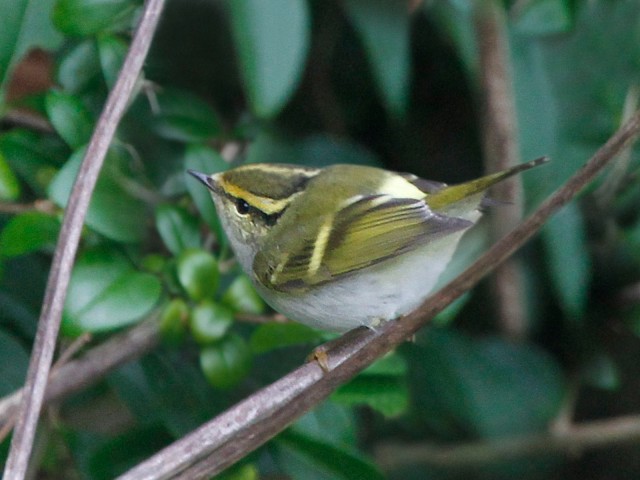Beautiful late October day. Covered Birling lane, Belle Tout and the Old Trapping Area. Yesterday's Pallas's Warbler was still occasionally showing well on the edge of Belle Tout wood. Small overhead passage of finches during the first hour but in the Old Trapping Area an interesting Treecreeper was found which I managed to get a number of photographs. I spent most of my time with this bird, I will be referring the i/d details but have included a number of pictures below.
Grey Heron 1
Pied Wagtail 12 E
Black Redstart 1 Birling
Blackcap 1
Pallas's Leaf Warbler 1
Chiffchaff 2
Goldcrest c25
Long-tailed Tit 6
Treecreeper Sp. 1
Linnet 120 E
Goldfinch 100 E

(taken by LP yesterday)
Pallas's Leaf Warbler Belle Tout wood
Black Redstart at Birling
Long fine bill and dark brown forehead with isolated pale spots
to the primaries
Flanks, vent and undertail coverts with brownish grey wash. Greyish breast
with a contrasting white throat.
Indistinct brownish-washed supercilium between eye and bill
In an attempt to compare critical detail the wing has been photographed off the monitor and shown below:
Beachy (left), Short-toed Treecreeper and Common Treecreeper (right)
Captions below from http://10000birds.com/terror-from-the-trees.htm
(Italics comparing to JFC's image)
Pink: the pale pattern on the alula is usually more extensive on the outer web on Common than on Short-toed, but there is considerable overlap. On the birds above, it’s not really working.
(Complete pale fringe to alula visible on JFC's image)
Blue: this is quite possibly the most important feature and the one most likely to be assessed without a photograph to analyze. The pale bars on primaries 6, 7, and 8 (counted from outside towards the center of the wing) overlap to almost equal extend in Common, forming a “stairway”. In Common, there is considerable overlap between primaries 7 and 8, but almost none between 6 and 7, forming a large right-angled blackish “corner” on the folded wing. Note also that the border of the pale bar towards the tip forms a more prominent saw pattern in Short-toed compared to Common.
('Stairway' a very close match lacking the right-angled blackish 'corner'. Perhaps just as important are the shape of the tips of the pale bars being particularly saw-toothed at the tips)
Red: A small pale spot is usually present on the fourth primary in Common, but often lacking in Short-toed.
(Position of outermost bar a neat fit with Short-toed Treecreeper)
Green: the dark wing bar below the pale wing bar on the secondaries is quite evenly broad in Short-toed, but less well-defined and narrowing towards the primaries in Common.
(Dark wingbar clearly consistently broad and not narrowing)
Yellow: the visible spacing of the primaries 6 to 8 is rather even in Short-toed, but more uneven in Common, with the tip of p7 being very close to p8, and a big step between p6 and p7. This is sadly not visible on the pictures above due to an unfavourable angle on both pictures.
(If anything, the pale tips to the primaries appear even more isolated than that of the images of the Short-toed Treecreeper)
There are more features on the wings, e.g. regarding the exact shape of the pale primary tips and the contrasts between the outer & inner web and the tip of the largest tertial.
(Inner web of the largest tertial clearly dark and therefore hardly contrasting with the outer web)







